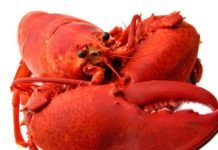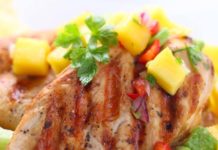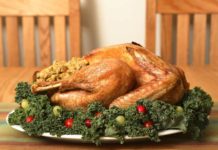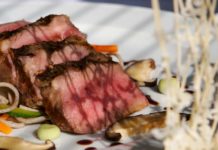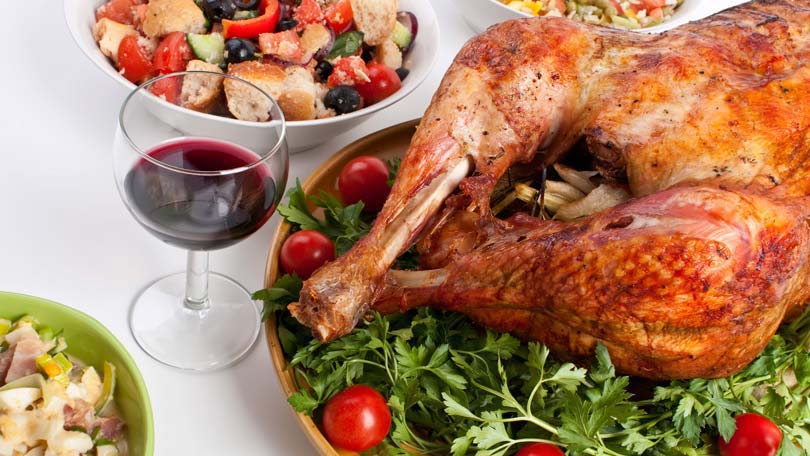
Cooking a turkey is an easy two-step process as long as you pay attention to the details. The first step is preparation; the second is cooking.
Step 1. Turkey Preparation
To prepare the turkey, it’s important that the bird is either thawed from a frozen state or fresh. Both types of birds will have great flavor, depending on how you cook it. To thaw the turkey, use the water method or the slow thaw method. don’t let these names fool you; both will take several hours.
To thaw a turkey using the water method, fill your cleaned and sanitized sink or a separate very large plastic container with cold water. Submerge the turkey inside its wrapper in the water. Notice that you do not remove the wrapper and submerge the naked bird. Every 30 minutes, change the water. It will take about 30 minutes per pound of turkey to thaw the bird so if your turkey is 10 pounds, you’re looking at 300 minutes or 5 hours with 9 water changes. The reason why you change the water when the turkey is submerged is because bacteria loves water and breeds quickly whenever living in or near water. When the turkey is finally thawed, you will need to thoroughly wash and sanitize the sink or tub.
To thaw a turkey using the slow thaw method, place the frozen turkey in a pan in the refrigerator. Allow about 24 hours thawing time for every 4 pounds of turkey. A 12-lb turkey will take 3 days; an 18-lb turkey will take about 4-1/2 days. Peaking in on the turkey from time to time won’t make it thaw any quicker.
Adding Flavor is Also Essential
The second part of the preparation stage is flavoring the turkey. This is where you’ll use butter, olive oil, herbs and spices to give the holiday meal the pizzazz that it needs. Certainly turkey has a flavor of its own without any of these extra seasonings, but your guests are most likely more likely to remember the meal as special if the turkey has enhanced flavors. Here are some flavor ideas:
- Brush melted butter on the skin of the turkey. Follow with salt and pepper.
- Brush extra virgin olive oil on the skin of the turkey. Follow with salt and pepper.
- Brush olive oil with an herb mixture into the skin of the turkey. Use herbs such as lemon thyme, basil, oregano, sage, marjoram, parsley, dill and/or coriander. Even crushed red peppers can add passion to the turkey meat and provide an unexpected flavor.
- Brush your favorite salad dressing into the skin of the turkey.
If you use flavor ideas 3 and 4, make up an extra half cup of the mixtures and baste the turkey with them during the cooking process for extra flavor.
If you will be stuffing the turkey, now is the time to add the stuffing. Fill both cavities of the bird with the stuffing after you have removed the gizzards.
Step 2. Cooking the Turkey
The second phase of the cooking process is the easiest. Place the turkey in a 2 to 2-1/2 inch deep roaster pan, preferably on a flat rack. Insert a meat thermometer into the deepest part of the thigh without touching the bone. Some people prefer to add about an inch of water. Cover the roasting pan (you can use tinfoil) and bake at 325 degrees Fahrenheit. For a stuffed 10 to 18 lb. bird, allow 4-1/2 hours cooking time. If unstuffed, 3 to 3-1/2 hours. Add half an hour up to an hour for a bird 18 to 22 lbs and another 30 minutes for a bird 22 to 24 lbs.
When cooking a turkey, the most important part is telling whether or not the turkey is thoroughly cooked. you’ll know the turkey is done when the meat thermometer hits 180 degrees Fahrenheit when piercing the thigh muscles. However, recently, experts have recommended a lower temperature of 170 degrees for doneness.
Let the turkey stand for about 30 minutes after cooking a turkey before carving; this makes it easier to carve.

